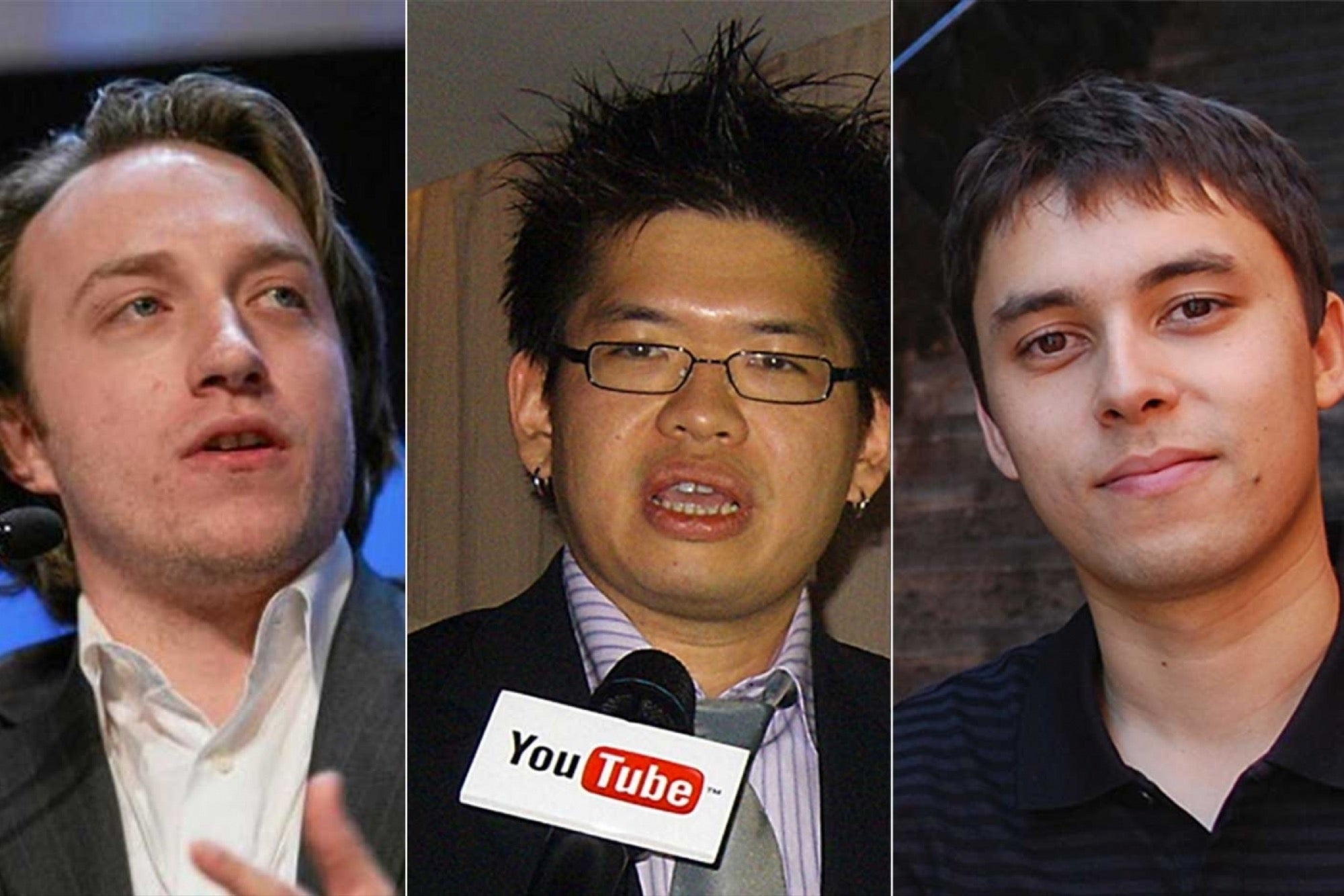
YouTube has seamlessly integrated into our daily lives, offering a vast repository of content catering to entertainment, education, and information needs. The genesis of YouTube and its subsequent evolution into the titan we know today are both captivating and noteworthy. This comprehensive article traverses through the condensed history of YouTube, recounting its inception and progression as a cultural icon.
The Inception of YouTube
Founded in February 2005 by Chad Hurley, Steve Chen, and Jawed Karim, all former employees of PayPal, YouTube sprang forth from their frustration in finding and sharing videos online after a dinner gathering. The vision was to establish a platform where users could easily upload, share, and watch videos, laying the groundwork for a groundbreaking endeavor.
The Maiden Upload
On April 23, 2005, Jawed Karim ushered in YouTube’s genesis by uploading the inaugural video titled “Me at the zoo.” A concise 18-second clip depicting Karim amidst elephants at the San Diego Zoo, accompanied by his observations about their trunks, inadvertently marked the commencement of a revolution in online video sharing.
Exponential Growth and Google’s Acquisition
With the advent of November 2005, YouTube experienced a staggering surge in popularity, with countless videos being uploaded daily. The platform rapidly evolved into a haven for user-generated content, propelling viral videos to the forefront. In a bid to harness its immense potential, Google acquired YouTube in November 2006 for a staggering $1.65 billion in stock, a game-changing move that paved the way for further expansion.
The Proliferation of User-Generated Content
Fueled by Google’s backing, YouTube witnessed exponential growth, luring an eclectic mix of content creators. Users began uploading videos spanning diverse genres, ranging from everyday life snippets to music covers, tutorials, and beyond. The platform transformed into a melting pot of creativity and self-expression, offering ordinary individuals the opportunity to transcend into internet sensations.
Monetization Initiatives
In August 2007, YouTube unveiled the Partner Program, granting content creators the means to monetize their videos through advertisements. This strategic move transformed YouTube from a mere video-sharing platform into a lucrative income source for creators, incentivizing an even larger influx of participants.
YouTube’s Cultural Impact
As YouTube’s popularity soared, its influence began seeping into popular culture. Memes, catchphrases, and viral challenges originated from videos on the platform, disseminating across the digital realm like wildfire. YouTube celebrities emerged, amassing millions of subscribers and even transitioning to mainstream media.
Adapting to the Mobile Era
With the advent of smartphones, YouTube swiftly adapted to the burgeoning mobile era. In 2007, it launched its first mobile app, empowering users to watch videos on the go. This newfound accessibility contributed to an exponential expansion of YouTube’s user base, solidifying its position as the preferred platform for video consumption.
The Advent of Live Streaming
Recognizing the surging trend of live content, YouTube unveiled its live streaming feature in 2011. This revolutionary addition enabled content creators to interact with their audiences in real-time, ushering in new horizons for concerts, gaming sessions, Q&A sessions, and other live events.
YouTube as an Educational Resource
In addition to entertainment, YouTube emerged as an invaluable educational resource, boasting channels dedicated to various subjects such as science, history, technology, and language learning. Both teachers and students found solace in YouTube, harnessing its supplemental educational content to augment traditional learning methodologies.
YouTube’s Socio-Political Influence
As YouTube’s prominence swelled, it also assumed a pivotal role in shaping socio-political movements. Videos capturing protests, rallies, and acts of activism rapidly propagated across the platform, fostering awareness and driving global change.
Original Content Initiatives
In 2012, YouTube launched its Original Channels Initiative, a venture aimed at introducing high-quality, exclusive content to the platform. This endeavor forged partnerships with renowned media companies and celebrities, cementing YouTube’s reputation as a hub for premium content.
The Emergence of YouTube Premium
Debuting as YouTube Red in 2015 and subsequently rebranded as YouTube Premium, this subscription-based service proffers an ad-free experience and exclusive original content. Catering to users seeking uninterrupted viewing pleasure, YouTube Premium continues to garner ardent followers.
YouTube as an Advertising Hub
Bolstered by its vast user base and staggering engagement rates, YouTube emerged as an alluring advertising platform for brands. Leveraging the platform’s broad audience reach, companies began rolling out sponsored content and targeted advertisements, capitalizing on YouTube’s pervasive influence.
The Era of YouTube Celebrities
In tandem with YouTube’s exponential growth came a proliferation of internet celebrities. Renowned content creators like PewDiePie, Smosh, Jenna Marbles, among numerous others, skyrocketed to fame, commanding millions of subscribers and cultivating passionate communities. These internet luminaries played a pivotal role in shaping YouTube’s subculture and garnering widespread recognition.
YouTube’s Commitment to Safety and Policy Reforms
Given its extensive reservoir of user-generated content, YouTube encountered challenges concerning the dissemination of harmful material and policy enforcement. Over time, the platform implemented several measures to bolster user safety and address concerns related to inappropriate content.
The Introduction of YouTube Shorts
In a bid to counter the burgeoning popularity of short-form video platforms, YouTube unveiled YouTube Shorts in 2020. This novel feature empowered users to create and share brief videos, directly challenging competitors like TikTok.
YouTube’s Global Reach
Unrestrained by geographical boundaries, YouTube serves as a universal conduit for sharing stories and connecting with diverse audiences worldwide. It has given rise to international stars and facilitated the appreciation of cultures from every corner of the globe.
YouTube’s Resilience during the Pandemic
Throughout the COVID-19 pandemic, YouTube emerged as a vital lifeline for many, furnishing entertainment, information, and a sense of community during trying times. From virtual concerts to home workouts, the platform seamlessly adapted to cater to evolving user needs.
YouTube’s Ongoing Innovation
Throughout its journey, YouTube has remained steadfast in its pursuit of innovation. Continuously exploring new technologies, features, and content formats, the platform endeavors to remain at the vanguard of digital media, constantly delivering an unparalleled user experience.
Frequently Asked Questions (FAQs)
Q: What is the origin of YouTube?
A: YouTube was founded in 2005 by Chad Hurley, Steve Chen, and Jawed Karim, who were former employees of PayPal.
Q: Who uploaded the first-ever video on YouTube?
A: The first video titled “Me at the zoo” was uploaded by Jawed Karim on April 23, 2005.
Q: When did Google acquire YouTube?
A: Google acquired YouTube in November 2006 for $1.65 billion in stock.
Q: How did YouTube influence pop culture?
A: YouTube played a significant role in popularizing viral videos, memes, and internet celebrities, thus leaving a profound impact on pop culture.
Q: What exactly is YouTube Premium?
A: YouTube Premium is a subscription-based service that provides an ad-free viewing experience and exclusive original content.
Q: How has YouTube contributed to education?
A: YouTube has emerged as an educational resource, offering an array of channels dedicated to various subjects and topics.
The enthralling journey of YouTube, from its modest origins to its towering presence in the domain of online media, is nothing short of awe-inspiring. It has metamorphosed the way we consume media, interact with one another, and express our individuality. With an unwavering commitment to user experience and constant innovation, YouTube’s impact on our lives is destined to continue evolving in the years that lie ahead.







